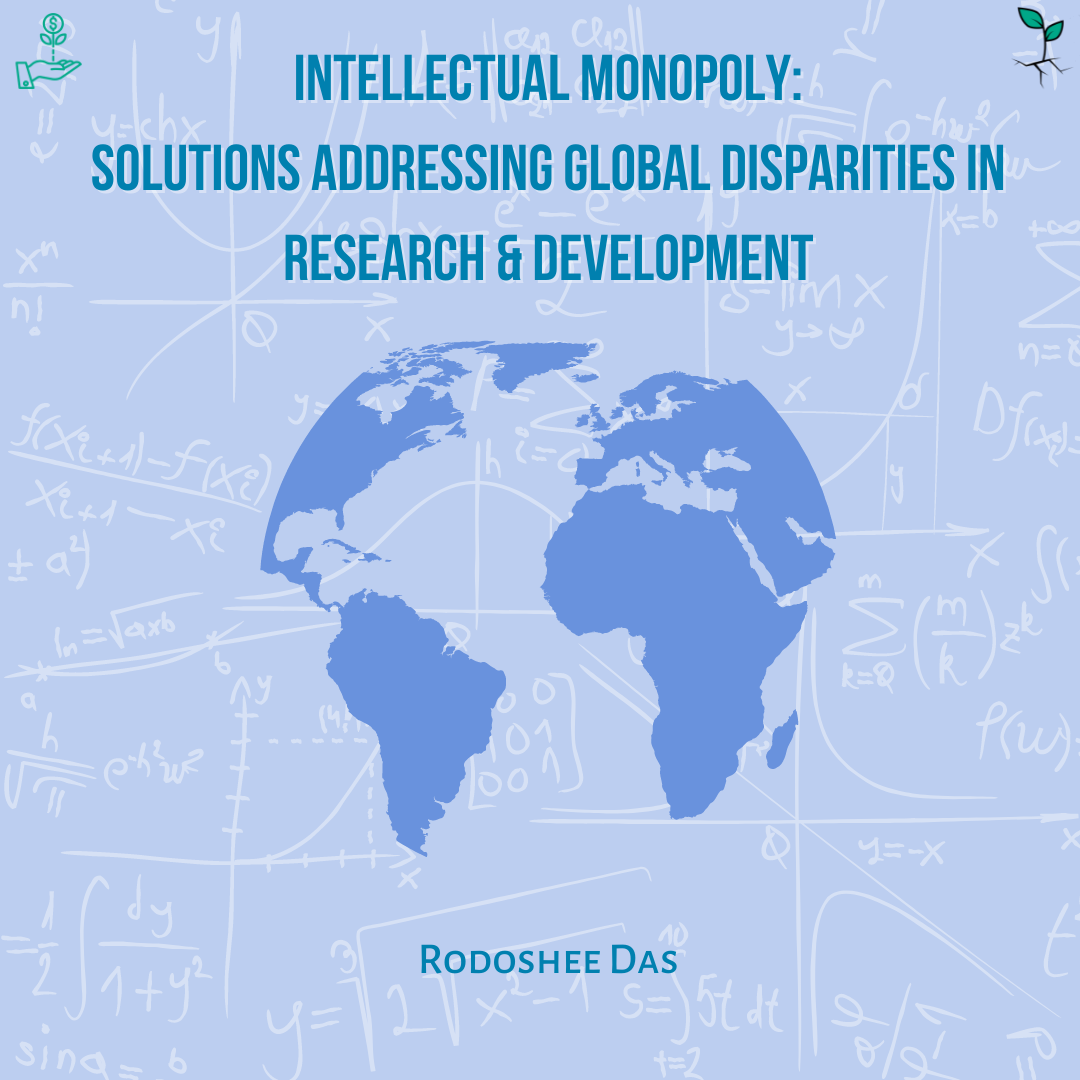In our first article installment, we discussed the problems in the R&D sector, monopolisation of intellectual property and how there’s a gap between the research institutions of Global North and Global South. But amongst so many problems, there are few solutions which can be taken up as policy suggestions.
- Prioritizing applied research might help. This kind of approach usually means focusing on immediate regional problems which need low-cost innovative solutions. That can create a scope for further basic research in the future, which usually revolves around universal problems. This focus may save the cost of expenditure for the government. They can prioritize applied research and divide the expenditure between basic and applied. Basic research can be a long-term goal and applied research will be given immediate funding as a short-term plan.
- Private and Business sectors based in South Asian and Sub-Saharan countries should be encouraged to take a leap of faith and invest in R&D. This was a proven success formula for European and American countries, where both public and private institutes joined hands to fund various projects.
- More international natural and social science campaigns and exchange programs should be held to create a platform for discussion of new ideas, giving space to budding scholars to engage in peer mentoring and expert advice.
- Projects should be given more financial support and space for domestic research fellows in case they are funded by local or global institutions.
- There should be more open access to journals and online libraries to increase accessibility to valuable and recent literature.
- Researchers should be paid well with a competitive figure. This will create an incentive for them to stay in their home country and continue research.
- Scholars from Asian and African countries should be invited to international conferences where the countries can exchange their valuable ideas with global minority countries leading in research, creating meaningful collaborations as a by-product. This will allow the global majority countries to explore more options and get to know the latest technologies, research work, and new methodologies to conduct research.
If both the global majority and global minority worlds join hands, they will be an unstoppable force.
Brazil is one of the biggest examples of how collaborative, local efforts, can amplify the research sector. One of their projects, CENA(Centro de Energia Nuclear na Agricultura), concentrated scientific instruments and critical expertise and made a facility that addresses the country’s critical developmental issues and works on collaborative research efforts.
Nepal has also made significant developments and innovations in the areas of soil erosion and agriculture. While developed nations invest a lot in forest conservation, the ‘community forest’ approach in Nepal provides surprisingly low-cost forest conservation and sustainable management options. SRI(System of Rice Intensification), demands less water but increases yields. It was developed in Madagascar during the 1980s. It offers an easy-to-adopt and profitable alternative for rice farmers. Tilganga Institute of Ophthalmology in Nepal is exemplary in the whole world for restoring the sights of millions of poor patients with low-cost lenses made after years of extensive applied research.
Similarly, Nobel Prize-winning Grameen Bank is also the outcome of a research project to outline a credit delivery system to provide banking services to rural communities. This model proved loans to be better than charity to fight poverty and also saw the rise of the microfinance sector in South Asia to combat poverty and promote the livelihood of rural communities. The National Innovation Center in Nepal is also working to find innovative solutions to different local problems. Two of the interesting successes is that they invented low-cost machines that help chase invading monkeys from farmers’ fields and their research on drone based drug delivery systems, if successful, will prove phenomenal in supplying medicines to the people in remote hills of Nepal. Brazil, China, Russia, and India, which traditionally played a secondary role in the global innovation realm, now provide good examples from sectors like electronics, communication and information technology on how to develop and sufficiently build-up own innovation capabilities.
With minority economies’ advanced innovation and access to abundant research resources, majority nations can progress in applied research to find new path breaking innovations. This can help in diversifying academia. Application of proven research products from global minority won’t work in the global majority’s framework due to differing economical, cultural, and demographic demands. It’s high time that the monopoly of the global minority’s advanced economies is broken with more access to resources for the R&D sector to flourish. Maybe one day more researchers like Abhijeet Banerjee and Venki Ramakrishnan wouldn’t need to leave their nation to pursue their dreams. They can stay in their country to support wonders like Muhammad Yunus!
Cover Art designed by GroundBreakers Network Engagement Fellow Gabrielle Garcia.
References:
Acharya, Krishna Prasad, and Santosh Pathak. “Applied Research in Low-Income Countries: Why and How?” Frontiers in Research Metrics and Analytics 4 (2019). https://doi.org/10.3389/frma.2019.00003.
ceciliarikap. “Intellectual Monopoly Capitalism and Its Effects on Development.” Developing Economics (blog), April 7, 2021. https://developingeconomics.org/2021/04/07/intellectual-monopoly-capitalism-and-its-effects-on-development/.
Miranda, J. Jaime, and M. Justin Zaman. “Exporting ‘Failure’: Why Research from Rich Countries May Not Benefit the Developing World.” Revista de Saúde Pública 44 (February 2010): 185–89. https://doi.org/10.1590/S0034-89102010000100020.
“PhD Dissertation Revision Services – Dissertation Revision.” Accessed August 3, 2021. https://www.dissertationrevision.com/.
https://www.apa.org. “Research in a Developing Country.” Accessed June 2, 2021. https://www.apa.org/international/pi/2008/12/de-baessa.
“Research on the Developing World: Breaking the Western Monopoly.” Accessed June 2, 2021. https://policyoptions.irpp.org/magazines/july-2018/research-on-the-developing-world-breaking-the-western-monopoly/.
“The Absent Voices of Development Economics by Arvind Subramanian & Devesh Kapur – Project Syndicate.” Accessed June 2, 2021. https://www.project-syndicate.org/commentary/why-does-the-global-north-dominate-development-economics-by-arvind-subramanian-and-devesh-kapur-2021-03?barrier=accesspaylog.
Vose, P B, and A Cervellini. “Problems of Scientific Research in Developing Countries.” IAEA BULLETIN, no. 2 (n.d.): 4.


